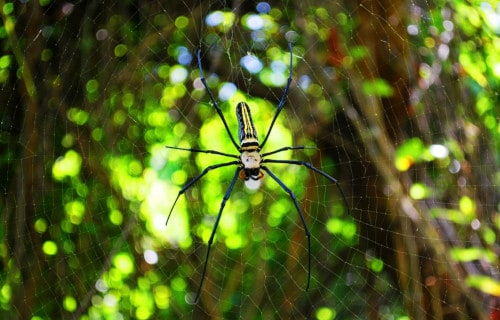
We hope that each of you, our readers, will enjoy and appreciate this article we present about these 4 Amazing Australian Spiders. It was our pleasure to gather the information for you. May it provide you with both education and increased awareness.
Certainly, these few species listed herein represent only a portion of the similar marvels in this region. It’s our belief, though, that they serve as excellent representations of the wonders that exist. Check out some of our other articles for similar marvels.
Brown Widow
Brown Widow Facts
- Leading off this collection of 4 Amazing Australian Spiders we present the famous work of Nature, the aptly-named Brown Widow.
- The term used here serves as only one of many common names for this lesser-known cousin of the dreaded Black Widow. Some of the others, though, include such terms as the grey widow, brown button spider, and brown black widow.
- The scientific name, however, for this remarkable arachnid remains that of the tongue-twisting Latrodectus geometricus. By either of these many names, though, it remains a significantly less dangerous species than its much better known relative.
- The first official recognition of this fascinating spider as a separate and distinct species occurred in the year 1841. This impressive work also took place as the result of the efforts of the well respected German entomologist, Carl Ludwing Koch.
- Due to a combination of its territorial range and numbers, it appears to be maintaining a stable population base. The IUCN, therefore, currently has no listing for the creature. Such a listing would appear on the organization’s Red List.
- The amazing Brown Widow Spider, should, however, still be considered to facing various risks. These further include such dangers as habitat loss across its range. Its greatest threat, though, likely comes in the form of ongoing climate change.
Brown Widow Spider Physical Description
Not surprisingly, given the similarity in names, as well as the genetic relationship, the Brown Widow Spider bears a resemblance to the Black Widow. Various physical differences quite obviously do exist, however, between the two species of arachnid.
Among these differences remains the simple fact that in this species, the degree of sexual dimorphism remains far more pronounced. That characteristic manifests itself in the fact that females attain a significantly larger size than do the males of the species.
More precisely, the smaller male attains an average body length of no more than 0.08 – 0.16 in (2 – 4 mm). The larger female, meanwhile averages reaching a body length of between 0.28 – 0.4 in (7 -1 0 mm). In both genders, the legs develop as highly elongated.
In coloring, the male Brown Widow Spider also tends to be more consistent in coloring. His body typically displays various shades of brown. The female, though, varies sharply among individuals, including shades of gray, white, light and dark brown, and nearly black.
The legs of the female also generally develop a dense covering of fine white hairs. The smaller, drabber male, though, does not possess this trait. Females of this remarkable species also display the same hourglass shape on their abdomens as their cousins.
- Kingdom: Animalia
- Phylum: Arthropoda
- Class: Arachnida
- Order: Araneae
- Family: Theridiidae
- Genus: Latrodectus
- Species: L. geometricus
Brown Widow Spider Distribution, Habitat, and Ecology
The amazing Brown Widow Spider actually inhabits an extremely broad swathe of the world. In point of fact, the arthropod currently inhabits a truly cosmopolitan area. Evidence indicates, though, that this occurs due to an artificial expansion via the actions of man.
Unfortunately, this has rendered it almost impossible to determine the area of the world in which it originally evolved. Nevertheless, recent evidence seems to indicate that this marvelous arthropod originally appeared in the area what’s now South Africa, in Africa.
In the wild, this invertebrate inhabits nearly all temperate and tropical environments. It has also completely adapted to inhabiting areas in and around human structures. These include the outsides of garages, picnic tables, along fences, and even piles of debris.
Like other spiders, the Brown Widow Spider evolved as a pure carnivore. It feeds on a wide variety of small insects, consuming virtually anything small enough to become trapped in its web. This it constructs with a random, often haphazard structure, like some species.
After mating, the female lays between 120 – 150 eggs in a sac. This structure has a distinct shape, being covered with numerous spiny projections. All specimens of this arthropod possess venom, yet this remains much less dangerous to humans the the Black Widow.
Giant Golden Orb Weaver
Giant Golden Orb Weaver Facts
- Next up in this article about these 4 Amazing Australian Spiders comes the brilliantly colored Giant Golden Orb Weaver.
- This product of Nature and evolution most frequently goes by the descriptive common name for obvious reasons. It also has another, very similar name, though. That’s the term northern golden orb weaver. But, whatever one calls it, it’s impressive.
- The term used also varies across its native range. Among scientific professionals, however, it’s typically referred to by its formal title. Most such specialists know this variety of golden orb weaver spider by the technical moniker of Nephila pilipes.
- Johann Christian Fabricius made the first acknowledgement of the arachnid as a separate and distinct species. This scientifically noteworthy deed the student of Carl Linnaeus accomplished in 1793. Since then, nine subspecies have been recognized.
- For the moment, this wonder of the invertebrate world further appears to be in a much better position than many species around the world. That’s due to the fact that it seems to be maintaining a population base that’s equally sizeable, sufficient, and stable.
- That fortunate situation further seems to hold true across the entirety of its range. Due to this, the IUCN presently lists the Giant Golden Orb Weaver as Least Concern. That status is reflected on the organization’s published Red List of Threatened Species.
- The intriguing arachnid nevertheless faces some factors that could eventually pose a threat to it. Habitat loss and degradation, largely due to human activities, rank among these. Its greatest potential threat, however, likely comes from climate change.
Giant Golden Orb Weaver Physical Description
The remarkable Giant Golden Orb Weaver easily impresses and intrigues those who encounter it. Although the Arthropod does so for several reasons, its sheer size clearly ranks high among them. That’s because it’s one of the largest of all of its close relatives.
In keeping with that, it also manifests a strong degree of the physiological trait of sexual dimorphism, like many arachnids. In its case, this characteristic primarily manifests itself in terms of sheer size. More precisely, the female of the species literally dwarfs the male!
Females of the species typically reach a body length equaling roughly 2 in (5 cm). That body also develops as highly elongated. Along its length, the body varies in width from 0.4 – 0.6 in (1.0 – 1.5 cm). Her legspan, however, typically measures a relatively enormous 6 in (15 cm)!
Males, meanwhile, remain quite tiny in comparison. That holds true given the fact that few individuals of that gender attain a body length beyond 0.25 in (0.64 cm). Its legspan also remains equally small in comparison, rarely exceeding 2 in (5 cm) in this specific aspect.
Otherwise, both genders of the Giant Golden Orb Weaver vary little in general outward appearance. The main exception to this is the coloring of the legs. Those of the female present a combination of yellow and black. Those of the male, though, show a light brown.
In terms of other color patterns, individuals vary significantly, with no regard to gender. The shades presented run from violet, to silver-gray, to various shades of brown. Males also develop small hairs on their legs, while most of the adult females lack these entirely.
- Kingdom: Animlia
- Phylum: Arthropoda
- Class: Arachnida
- Order: Araneae
- Family: Araneidae
- Genus: Nephila
- Species: N. pilipes
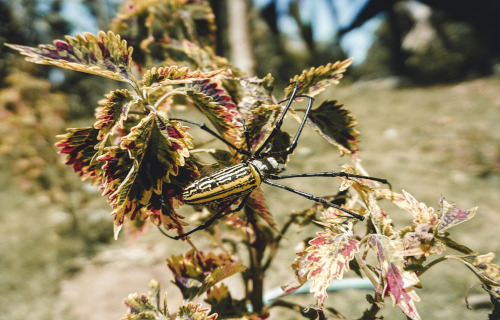
Giant Golden Orb Weaver Distribution, Habitat, and Ecology
Luckily for the Arthropod, the Giant Golden Orb Weaver evolved as native a comparatively broad swathe of the globe. That zone of habitation also happens to be a general region shared by numerous other amazing species. It’s unknown if it ever appeared anywhere else.
That statement holds true partly because it evolved in a region that includes parts of the continent of Asia. There, it makes its home in the east and southeast portions of the area. Yet it also lives in other parts of the general region known as Oceania, including in Australia.
Wherever it makes its home, though, the remarkable arachnid displays strong preferences regarding its exact habitat. As a general principle, it only resides in areas or relatively high moisture, for one. Yet it also strongly prefers that area to also have little or no direct sunlight.
In parts of its range, this frequently includes regions of rainforest. Most often, in all parts of its habitation range, it most commonly lives comparatively near the coast. That’s due to the greater level of overall precipitation. It also appears in parks and even private yards.
The magnificent Giant Golden Orb Weaver generally constructs its large webs in trees or larger bushes. It also creates these structures against buildings or other large features of the terrain. In most of these locations, though, it requires relatively close surface water.
It also evolved as highly choosy in its diet, unlike most spiders. In fact, it only feeds on a few species. It even goes so far as to remove some insects from its web! The spider avoids insects that exude certain unpleasant compounds. It mainly feeds on somewhat larger prey.
Scorpion-Tailed Spider
Scorpion-Tailed Spider Facts
- Our next choice for inclusion in this gathering of these 4 Amazing Australian Spiders is the distinctively evoled species named the Scorpion-Tailed Spider.
- This attention-grabbing term perfectly fits this amazing arthropod. Although riveting, it’s not the only name applied to it, though. That’s because it’s also known by such terms as scorpion orb weaver and simply the tailed spider.
- Its official scientific name, meanwhile, remains far more difficult to pronounce. That’s because arachnologists know it as the Arachnua higginsi. Regardless of which term one applies to it though, it’s an incredible species, and remarkably evolved.
- The highly respected German entomologist and arachnologist, Ludwig Carl Christian Koch, made the first official notice of it. That original recognition of the arachnid as a separate and distinct species took place due to his efforts in the year 1872.
- Fortunately, the amazing Scorpion-Tailed Spider appears to be maintaining a population base that’s both sufficient and stable. This further seems to hold true throughout the entirety of its range. The IUCN, therefore, has no listing for the animal.
- This fascinating species nevertheless faces the same potential threats that most, if not all, living things on earth now do. These come in many forms, of course. Chief among these would be habitat loss and the ongoing effects of climate change.
Scorpion-Tailed Spider Physical Description
The magnificent Scorpion-Tailed Spider actually deserves note for two different physical reasons. The first, somewhat surprisingly, involves its simple physical size. That’s due to the fact that this amazing arachnid evolved an impressive degree of sexual dimorphism.
More specifically, in its particular case, the females develop as significantly larger in terms of body size. The length of the body of the female averages about 0.63 in (16 mm). That of the tiny male, however, only reaches an average length of roughly 0.08 in (2 mm).
The astonishing tail, though, remains its most distinctive physical attribute. This also represents another form of gender-based physical difference. That’s because only the females develop this body part. This appendage increases in size with each molting.
Though different in terms of size and the unique appendage, the two genders display identical patterns of color. This varies extensively among adult individuals, however. Typically, though, this ranges from as light as beige to as dark as shades of brown and black.
Another color pattern further appears among a small percentage of adults. That’s the presence of a bright red or yellow patch on the abdomen. Juveniles of the impressive Scorpion-Tailed Spider, however, frequently display even brighter colors than adults.
- Kingdom: Animalia
- Phylum: Arthropoda
- Class: Arachnida
- Order: Araneae
- Family: Araneidae
- Genus: Arachnura
- Species: A. higginsi
Scorpion-Tailed Spider Distribution, Habitat, and Ecology
The fascinating arachnid known as the Scorpion-Tailed Spider has a very specific habitat range. That’s because it evolved as native to only a limited portion of the globe. It’s also a region well known for the astounding diversity of life, including spiders.
This holds true due to the fact that it evolved as endemic to a portion of the continent of Australia. Even within that country, though, its range remains restricted. In point of fact, it’s only known to live in the southern continental sections, and Tasmania.
On the other hand, within that area it appears to be widespread. That’s due to the fact that it displays a remarkable versatility in terms of its habitat preferences. The natural marvel seems comfortable in virtually any form of bushland, even gardens on occasion.
The web of this particular arachnid typically appears built close to the ground. Surprisingly, this appears in either a vertical, angled, or even horizontal position. During the day, the spider sits patiently in or near the center of the web. Here, it patiently awaits its prey.
Most commonly, the prey of the Scorpion-Tailed Spider consists of small insects, like most of its kin. The tail, though distinctive, remains harmless, and plays no role in hunting. It does, however, move it in a manner similar to a scorpion, as a deterrent to predators.
Signature Spider
Signature Spider Facts
- Closing out this compendium of these 4 Amazing Australian Spiders comes the incredible creature known as the Signature Spider.
- This commonly used term impressively serves as the common name for any arachnid in the genus Angiope. Currently, scientists recognize 75 members of this impressive genus. That may change, however, as new species become recognized.
- That attention-grabbing common name comes from the four unique zigzag patterns individuals create in the center of the web. Scientists applied the term stabilimentum to these patterns. Many researchers believe these designs serve several purposes.
- These supposed purposes include attracting insects and warning larger creatures of the presence of the web. That would make sense, from a practical standpoint, since the majority of the web typically remains practically invisible to the eye.
- The colorful arachnid also evolved very specific, and highly effective, behavioral patterns. The legs usually get held together in pairs while the spider sits stationary in the web. Therefore, most prey does not recognize the creature as a spider.
- For the moment, most of the various forms of Signature Spider seem to be maintaining large and stable populations. The IUCN, therefore, presently does not list many of them on its Red List. Many, though, no doubt face the ongoing threat of climate change.
Signature Spider Physical Description
Perhaps most notably, the various species of Signature Spider exist in a wide range of sizes and appearances. The various types also exhibit sexual dimorphism in the same manner. That’s due to the fact that each of them display this trait in terms of sheer physical size.
As part of this characteristic, females typically reach several times the size of the males. The females of a few of the largest species, furthermore, attain an impressive leg span of as much as 4 in (10 cm) across. Males, meanwhile, rarely exceed 1 in (2.5 cm) across.
The great majority of the different types of Signature Spider present basically the same color pattern, however. This color scheme consists of a predominantly yellow body, with black legs. The eight legs also grow long and powerful, relative to its body size.
- Kingdom: Animalia
- Phylum: Arthropoda
- Class: Arachnida
- Oder: Araneae
- Family: Araneidae
- Genus: Argiope
Signature Spider Distribution, Habitat, and Ecology
It must be noted and appreciated, first of all, that the remarkable Signature Spider has an extraordinarily wide distribution. That’s because the various species in the genus inhabit nearly every part of the globe. The sole exception to this range consists of Antarctica.
The differing species, therefore, thrive in significantly differing habitats. These include such regions as jungles in the tropical regions, to forests, gardens, and even private yards, in temperate regions. But, most species occur in temperate and tropical climates.
The majority of the different species of Signature Spider also construct their webs roughly 3 ft (1 m) above the ground. Most forms and individuals prefer regions of dense foliage since this also typically means the presence of large numbers of small flying insects.
Though all of them typically prey on very small insects, most remain capable of killing an insect twice their own size. A few of the larger species can also deliver a rather painful bite to a human being. The toxins, though, generally pose no threat to human life.
The pain of the bite, though, occurs simply due to the sheer size of the fangs of the arachnid. This is true because most have absolutely no venom at all. The cause of any pain felt remains consistent even for those few species in the genus that do possess toxins, however.
That’s because the venom of these creatures remains harmless to humans, except for those with relevant allergies or health issues. Finally, the relative toxicity and effectiveness of the venom roughly equals that of the sting of a bee. They’re large but harmless.

4 Amazing Australian Spiders
We hope that each of you enjoyed reading, and hopefully learning from, this article we’ve written about these 4 Amazing Australian Spiders. It’s also our hope that doing so has left you with either a new or renewed appreciation for such wonders of Nature.
Unfortunately, however, many of their kindred around the world now find themselves facing strong threats to their continued existence as a species. Many of those dangers, in fact, stem from the actions of mankind. We must do all we can to protect and preserve them all.
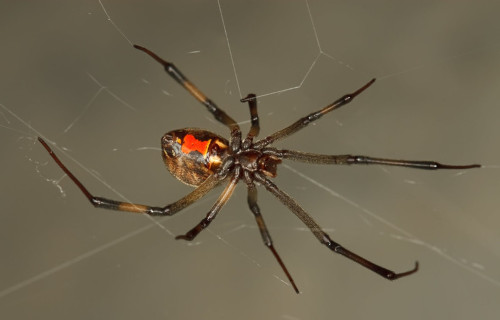
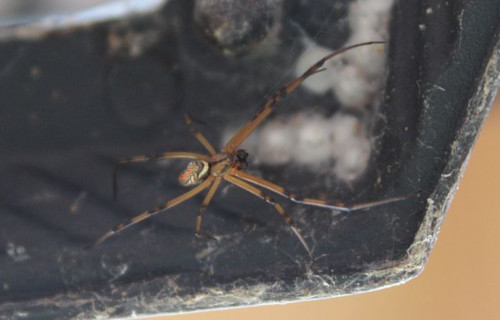
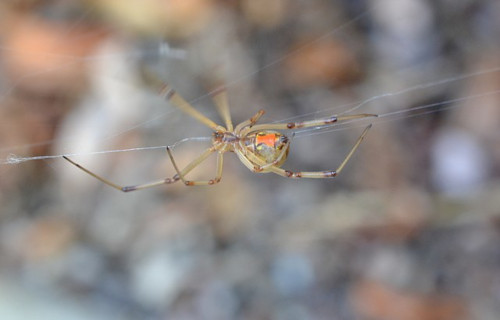
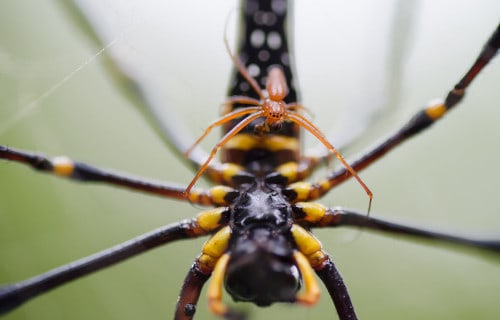
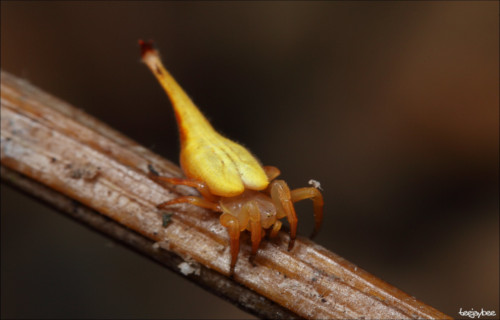
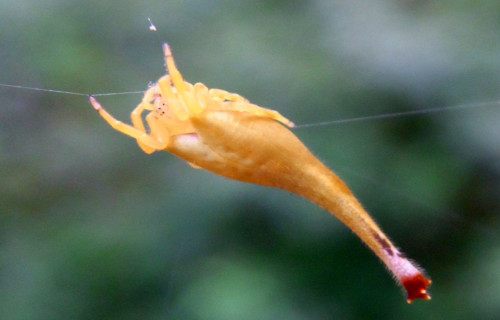
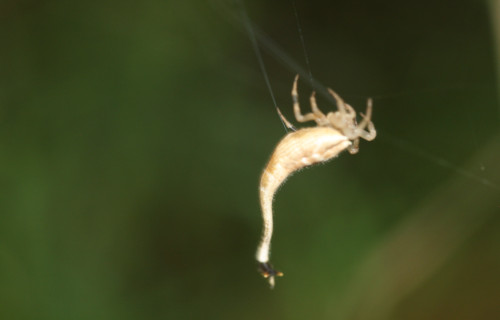
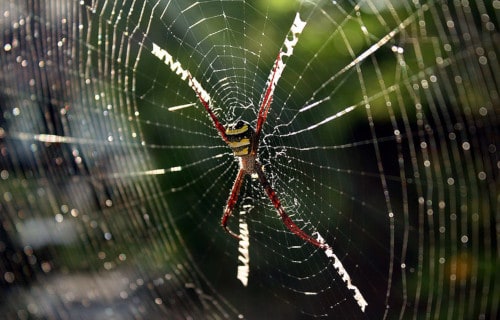
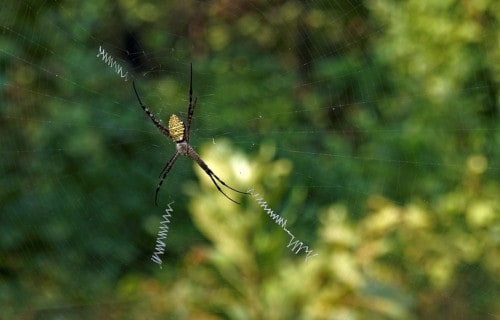
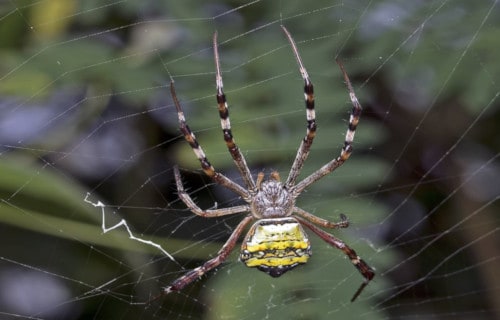









Leave a Reply